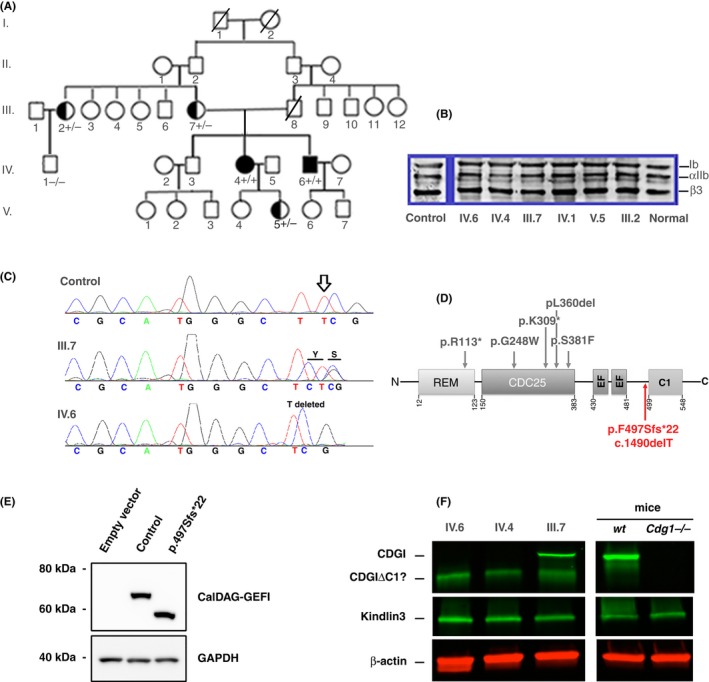Figure 1.

(A) Family pedigree of five generations. The genotyping of family members is shown when performed (+/+, black symbols; +/−, half‐black symbols; −/−, open symbols). Bar indicates deceased member. (B) Western blot of sodium‐dodecyl sulfate‐solubilized platelets from genotyped family members incubated after transfer with murine MoAbs to GPIb, αIIb and β3 with bound mouse immunoglobulin detected by chemiluminescence according to standard procedures.17 (C) RASGRP2 sequencing results showing the homozygous c.1490delT variation (p.F497Sfs*22) in propositus (bottom), heterozygous mother (middle) and the normal control sequence (top). (D) Schema showing the basic structure of the CalDAG‐GEFI protein and the positions of known disease‐causing genetic variants as reported in the literature.12, 13, 14 Our novel variant is in red. The different structural domains are the ras exchange motif (REM), the catalytic domain (CDC25), the calcium‐binding EF hands (EF), and the C1‐like regulatory domain with unknown function. (E) Representative western blot for CalDAG‐GEFI in GripTite 293 MSR cells transfected with vectors coding for the wild‐type and the p.F497Sfs*22 variant of RASGRP2. GAPDH (glyceraldehyde 3‐phosphate dehydrogenase) expression was used as a loading and electrophoretic transfer control.12 Note the presence of the faster migrating truncated band for the mutant protein. (F) Western blotting comparing the fluorescence detection of CalDAG‐GEFI in platelets from the index case (IV.6), his homozygous sister (IV.4); their heterozygous mother (III.7), wild‐type mice and Caldaggef1 knock‐out (Cdg1−/−) mice; technical details were as described.13 The intact CalDGAG‐GEFI protein is missing for the index case and his sister but present in mother and WT mice
